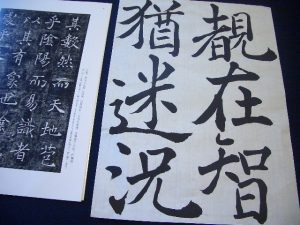Poetry Forms: Haiku and Senryu

Kanko (https://www.flickr.com/photos/29282750@N00/11724073) CC-by-2.0 (https://creativecommons.org/licenses/by/2.0/)
Haiku is a poetry form that many people learned as early as grade school, when it was very simply defined as “three lines, with five, seven, and five syllables.” And while that is the format of a haiku, it’s not exactly what a haiku would be in Japanese.
One of the major differences is the way in which Japanese poets count “syllables”. In reality, they are counting sounds, or the individual katakana characters that make up a Japanese word. Another important aspect of haiku is the “juxtaposition of two images or ideas and a kireji (‘cutting word’) between them“. Finally, most haiku include a seasonal reference, or have nature as their topic.
Senryu are similarly structured poems but without the second and third characteristics mentioned in the previous paragraph. They still adhere to the “syllable” or “sound” pattern of the haiku.
But what does all of this mean? For modern haiku, the idea is often more important than the details. That makes it both an easier and more difficult form. Because I can write a poem adhering to the syllable and line count, and feel like I’ve accomplished the goal. But for this form, that’s not REALLY the goal. The goal is the beauty of capturing something in a concise fashion. And that’s a lot harder to do, syllable count or no!

Comments